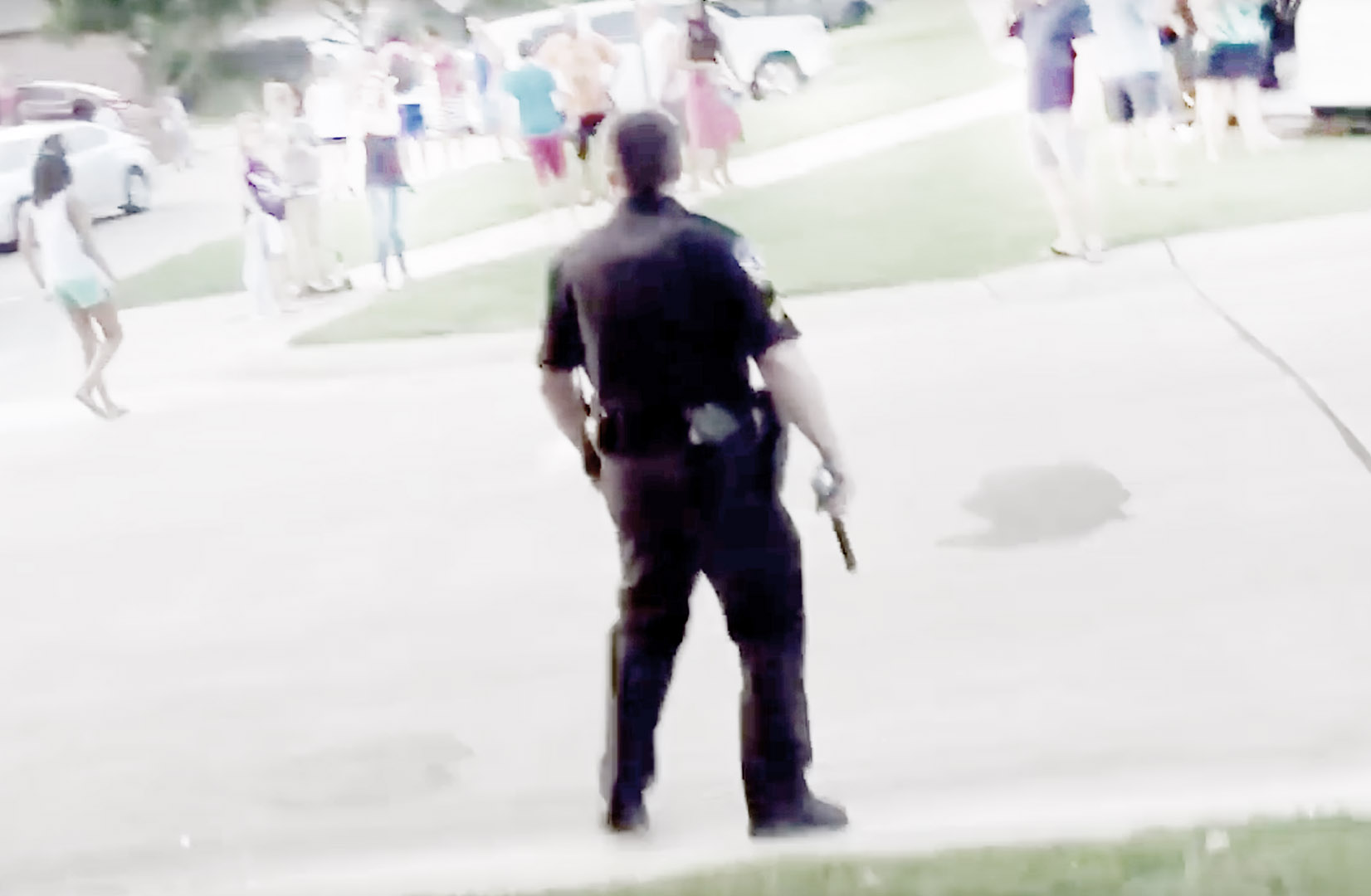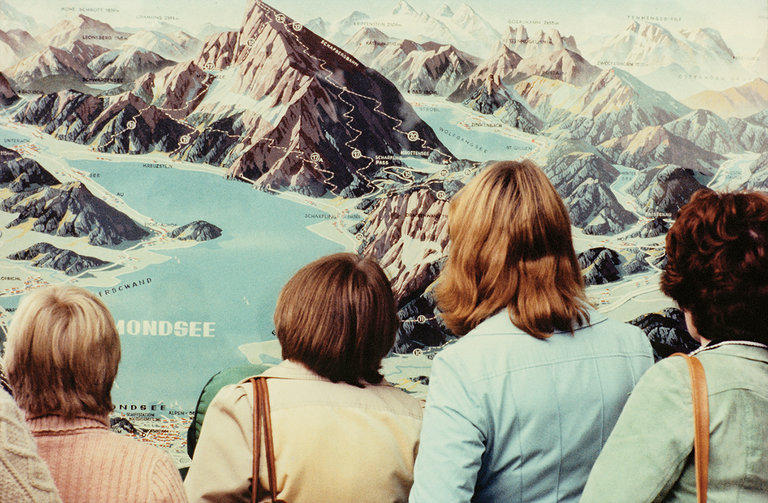
She is an art student, 20 years old, and she has booked a studio for a number of hours. She will have studied the corners of the floor and walls, where the windows are positioned and how she is going to make the light work. I’m guessing she has a few plans about how to proceed, but she’s also just going to play around.
She is her own subject, but she is embodying many other subjects.
Look at her. There she is. She is all there, but she’s always trying to make herself disappear – to become vapour, a spectre, a smudge, a blur, a subject that is erased yet recognisable. Sometimes she disappears into the wallpaper, or is pinned naked underneath a door that seems to have spectrally fallen from nowhere, or hides her mouth behind an upturned umbrella – sculpturally exposing its starfish shape, the geometry of its interior. Woodman knows we know she’s there and by constructing techniques to make herself vanish, she knows she makes herself bigger. She makes herself bigger because we are searching for her. The artist, Francesca Woodman, has given us something to find. It’s a dance, a theory (perhaps a Lacanian theory: ‘la femme n’existe pas’), a performance, a provocation, an experiment, a joke, a question.
I know she is art directing everything, working out how to do her trick. She is alert, supple, aligned, poised. If she’s making herself present by making herself absent then that is an equation easier to figure out with math or physics, but she’s doing it with art.
The boots are there to land this ethereal image. It’s so important to have a grip when we walk, as we have been societally taught to perform, into the frame of femininity – and as we step out of the frame too, into something vaguer, something more blurred. Francesca Woodman, the artist, can move freely in these boots, but they also pull her down. The image would suffer without their presence. Actually, I am wearing boots that are quite similar as I write this. In about five minutes from now, I’m going to switch off my computer, lock the door of my writing shed and walk to the tube station.
I think about Francesca Woodman’s inspiring images every time I write a female character and begin to embody her (make her present) in the world of my fiction.
(…)





